Hungry wolf". Odyssey of the German auxiliary cruiser "Wolf"
Translation of the article "Hungriger Seewolf" published in the German military history magazine "Deutsche Militaer und Geschichte" Nr. 8-9 2021.
Author: Max Remke
Translation: Slug_BDMP
At the end of 1916, an armed civilian steamship "Wolf" left Kiel in strict secrecy. Then no one knew that his voyage would last more than a year and that this ship was destined to enter history as the most productive raider of the German imperial fleet.
At first it seemed that the cruise of the ship "Wolf" (SMS Wolf) was doomed to failure.
On November 30, 1916, the ship under the command of corvette captain Karl-August Nerger left Kiel. This was the third attempt to break through the naval blockade of the Entente fleets. The exit was carried out in complete secrecy. Even their own patrol ships were not notified of the upcoming operation. Even the team members did not know about her goals.
The risk was very high: the ship's weapons were disguised and, moreover, covered with ice in the conditions of the storm that broke out. And a rather slow-moving steamer could not hide from warships. But this was not enough: the boat was ripped off by a storm, and a box with signal flares caught fire. And, as Captain Nerger later recalled, "the sea lit up like day."
Despite all the bad omens, the captain decides to continue the campaign. 347 sailors on board could only pray. But luck is on their side this time.
What awaits these "capters" in their many months' voyage?
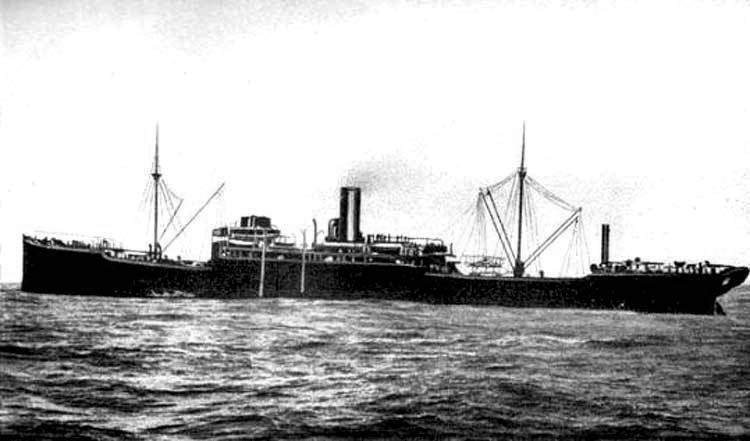
Auxiliary cruiser "Wolf" (SMS Wolf). Outwardly, nothing gives out in this steamer a warship
Auxiliary cruisers of the Kaiser fleet
Immediately after the outbreak of war in 1914, the British fleet began blockading the English Channel and the outlets to the North Sea.
Instead of engaging in a decisive battle with the Grand Fleet, as previously planned, the German fleet focused on disrupting enemy shipping. For this purpose, on the one hand, recently appeared submarines are used, on the other, cruisers and auxiliary cruisers. Initially, fast passenger liners such as the Emperor William the Great or Queen Louise were used as support cruisers. But soon in this role they were replaced by cargo ships. Although they had a lower speed, they consumed much less coal.
Of all the German auxiliary cruisers, seven were sunk, two were interned. Only one of them - "SMS Moewe" ("Seagull") - managed to make two military campaigns and return to Germany.
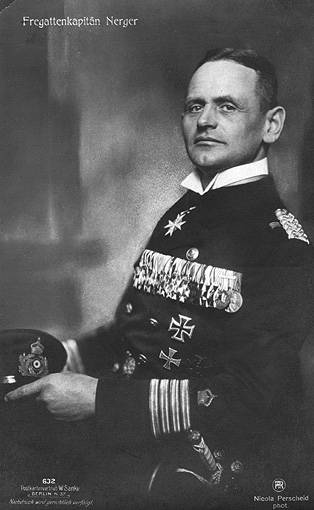
The commander of the "Wolf" corvette-captain Karl-August Nerger.
Rely only on yourself
The Wolf, like other German auxiliary cruisers, was a converted cargo steamer. "In nee" it was called "Wachtfels" and belonged to the shipping company Bremer-Hansa-Linie. But now the time has come to serve the emperor: without revealing oneself, thousands of miles from their native harbors and without the support of their own fleet, disrupt the sea communications of the Entente countries and divert their naval forces onto themselves. It was possible to supply oneself with fuel and food only at the expense of trophies. It was possible to rely only on oneself - communication with the homeland was impossible for reasons of secrecy and great distance.
On a clear day, January 16, 1917, having covered 8 nautical miles, "Wolf" reached the Cape of Good Hope. Sweating, the sailors dumped the first mines overboard. There were 000 of them on board. The plan was to turn the routes considered safe into deadly traps. The armament also included seven 465-mm guns and four torpedo tubes. They were all well disguised.

Raider's armament.
On the left is one of the four torpedo tubes.
On the right is one of seven 150 mm guns.
In addition, there were three more 52mm guns on board.
Captain Nerger seeks to refrain at first from hijacking ships, as it is easy to run into British warships in these waters.
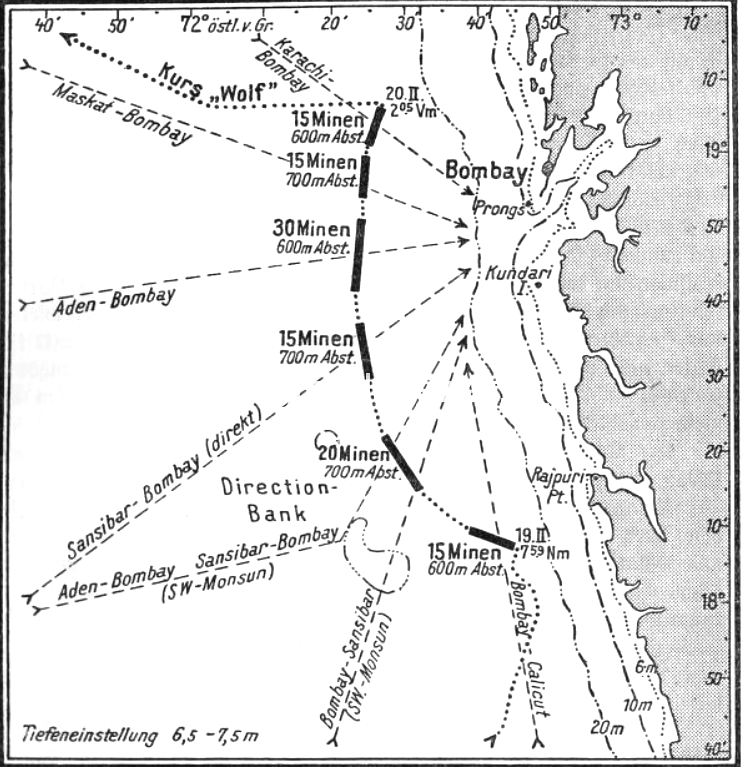
Layout of mines in the Bombay area. Source: seawarpeace.ru
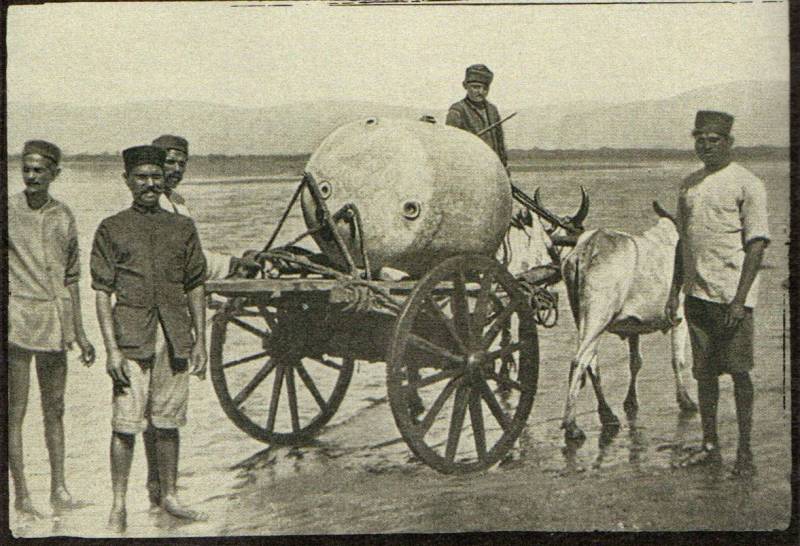
A dangerous find. A naval mine washed ashore in the Bombay region. Desperate Indians take her out on a cart drawn by oxen.
First mining
Only on January 27 "Wolf" got its first victim - the British steamer Turritella.
All such attacks took place according to the same scenario: upon seeing an enemy ship, the auxiliary cruiser began to approach, and then raised a military flag. Almost always, only a demonstration of weapons, so disguised, was enough to force the victim to surrender.
In the case of the Turritella, a warning shot had to be fired in front of the bow. After that, the prize team landed on the "Briton" and took control of it. Then the contents of the victim's holds were reloaded onto the "Wolf", and the team was placed in specially prepared rooms. Then the robbed ship was sunk. The crew was interrogated - this, along with listening to the radio broadcast, was the only source of information about the current situation in the world and the course of the war.
The Wolf was well adapted for solo hunting, the 135-meter vessel had additional booking, and the silhouette could be changed beyond recognition by the crew within a few hours.
The reserves of coal, food, spare parts amounted to 6 tons, which made it possible to operate autonomously for several months without replenishing them.
And, finally, a miracle of technology - the "Wolf" (Woelfchen) - the seaplane "Friedrichshafen FF.33", which allows you to conduct reconnaissance in the vast expanses of the ocean. The further showed that the "Wolf" is capable of more.
"Wolf" found?
On May 22, 1917, the Wolf anchored off the idyllic tropical island of Raoul (in the South Pacific). 175 days at sea were dear to the ship and crew. The cars needed repair. That is why Captain Nerger chose this lonely island located north of New Zealand - during a six-day repair, the hunter himself could turn into prey.
But the solitude turned out to be deceiving.
The Dutch steamer Vairuna, equipped with a radio station, was sailing near the island.
Did they notice "Wolf"?
One radio message indicating the location of the raider would mean the end of the campaign. The decision was taken without delay - the "Wolf" with bombs under its wings soars into the air. Quickly overtaking the Vairuna, the airplane dropped a warning bomb in front of the steamer's bow - this had an effect. The crew threw radio equipment overboard and surrendered. On board was rich production: milk, cheese and, most importantly, 1 tons of coal.
Whatever the privateer came across on the captured ships during a long voyage: various metals, tea, silk, rubber, and besides, toys, delicacies ...
Even two cars were caught on the hijacked steamer John Kirby, but they were thrown overboard. And also prisoners, by the end of the raid there were already 467 of them, including the captains of the captured ships. All of them, with one single exception, patiently endured the hardships of captivity.
Wolf opens fire
On September 27, 1917, in the area of the Maldives, "Wolf" noticed a potential prey - the Japanese ship "Hitachi-Maru".
However, this time everything did not go according to the usual scenario - the civilian ship was armed with a 125-mm cannon and was not going to surrender.
For the first and last time during the entire campaign, the Wolf's 150-mm cannon spoke. The Japanese could do little to counter this. German shells hit the Japanese gun and radio room. About 20 people were killed on Hitachi-Maru.
In the end, Japanese captain Shiedzu Tominaga was forced to surrender. He became the only one of the captains of the ships on the way of the German raider who decided to put up resistance, which was in vain. He could not forgive himself for the death of his subordinates and, after several weeks of severe depression, committed suicide by jumping overboard unnoticed.
Hitachi-Maru became a very valuable prize for the Germans. For a long time he followed the "Wolf" with a German crew as a transport, and later part of the boiler equipment was removed from it.
Home!
Finally, it's time to return home.
This was accompanied by many dangers - the ships of the Entente controlled most of the Atlantic. But even now, luck was on the side of the German sailors.
On the way back, they managed to capture the French barque Marshal Davout and the four-masted Norwegian Størebror. On board the "Frenchman" were, among other things, elite wines, which allowed the German sailors to celebrate Christmas well before embarking on a dangerous journey through the British blockade.
February 27, 1918, having spent 451 days at sea, "Wolf" returned to Kiel.
Nobody was waiting for him. More than a month earlier, the Admiralty had recorded the raider among the missing and sent a notification about this to the family members of the crew.

The triumphant passage of the Wolf's crew through Berlin. The picture was taken near the Brandenburg Gate. Left - Captain Nerger.
Now the population of Kiel greeted the returning heroes with glee. The sailors paraded through the city center. Captain Nerger was awarded the Pour le Mérite (Merit) order and the rest of the crew were awarded the Iron Cross Orders.
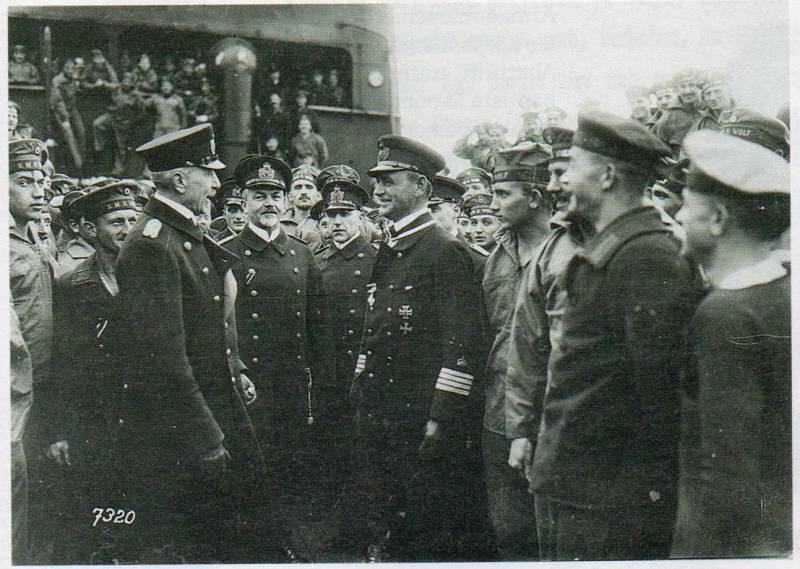
The military governor of the Kiel naval base, Admiral Gustav Bachmann, presents the Order of the Pur-le-Merit to Captain Nerger.
This was the last success of the Kaiser's fleet.
Eight months later, a sailor uprising began in Kiel, which became the impetus for the fall of the monarchy.
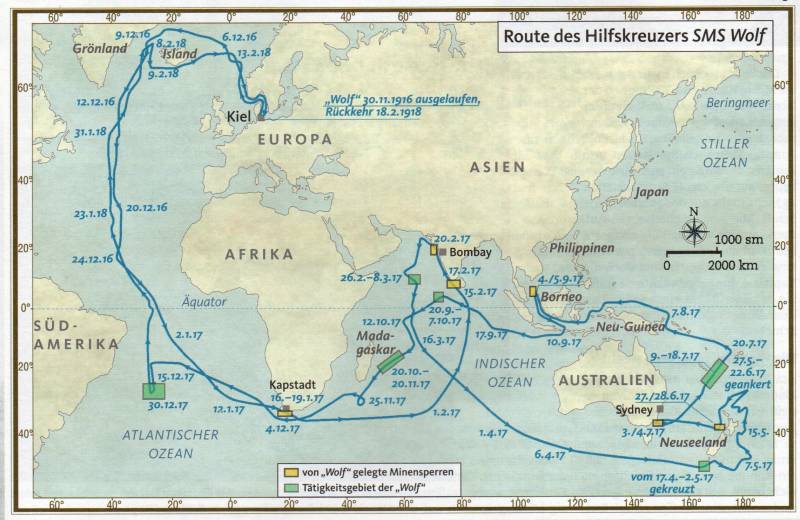
Halfway across the world. Auxiliary cruiser Wolf completed the longest autonomous combat mission during World War I.
Conflicting findings
On the one hand, the campaign of the auxiliary cruiser Wolf was a relative success.
By hijacking and laying mines, he managed to destroy 27 ships with a total tonnage of 60 tons. Other raiders also inflicted some damage on enemy shipping. Do not forget the propaganda effect - such officers as Nerger or the captain of the raider "Möwe" Count Nikolaus zu Dohna-Schlodien (Nikolaus Graf zu Dohna-Schlodien), became true national heroes.
Nevertheless, the successes of the "modern pirates" failed to correct the viciousness of the German naval strategy. Since the time of Admiral Tirpitz, the German fleet has been preparing for a decisive battle with the British, but it never happened.
It is natural that not the commanders of giant battleships, but submariners and captains of auxiliary cruisers - in fact, armed merchant ships, remained in the memory of the descendants.
Chronicle of the campaign of the auxiliary cruiser "Wolf"
November 30, 1916 - departure from Kiel.
January 16-19, 1917 - arrival at the Cape of Good Hope and setting up a mine bank there.
February 15-20, 1917 - mine laying off the coast of India.
February 26 - March 8, 1917 - raiding in the Arabian Sea, capture of "Turiel" and "Jimna".
March 11, 1917 - Sinking of the Wordsworth in the Indian Ocean.
March 30, 1917 - capture of the barque "Dee".
April 15 - June 28, 1917 - unsuccessful raiding and mine laying off the coast of New Zealand.
May 27 - June 22, 1917 - Repairs at Raul Island and capture of Vairuna.
June 9 - July 18, 1917 - raid in the South Pacific Ocean, capture of ships Winslow, Beluga, Encore.
August 6, 1917 - the capture of the Matunga off the Bismarck archipelago.
September 4-5, 1917 - mine laying in the South China Sea.
September 10, 1917 - return to the Indian Ocean.
September 20 - October 7, 1917 - raiding off the Maldives, capture of Hitachi Maru.
October 20 - November 20, 1917 - actions in the Madagascar area, the seizure of the Igotz Mendi.
November 30, 1917 - John H. Kirby is hijacked off Port Elizabeth.
December 9, 1917 - return to the Atlantic.
December 15 - the last "hunt" in the South Atlantic, the capture of "Marshal Davout".
January 4, 1918 - The last kill is the Størebror.
February 27, 1918 - Arrival in Kiel.
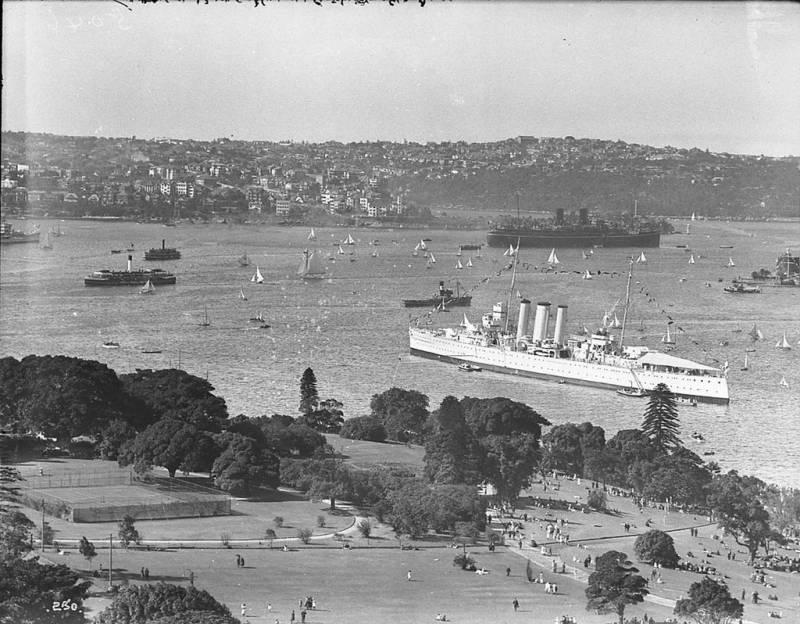
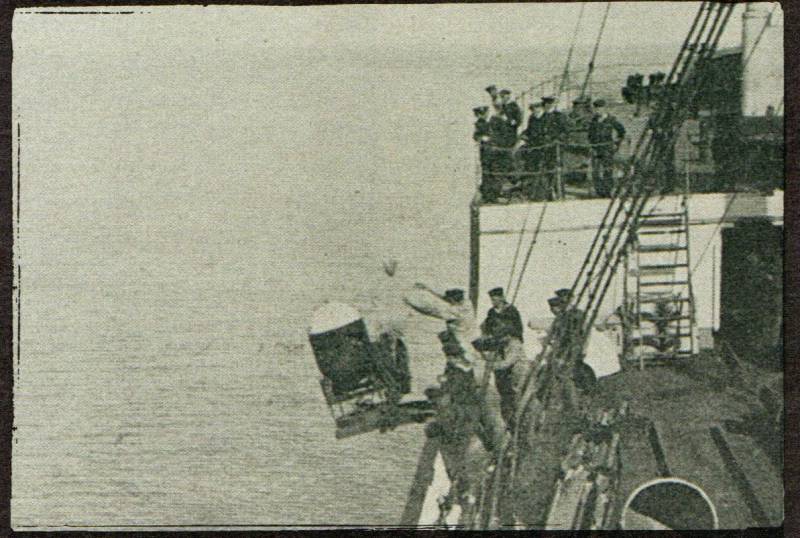
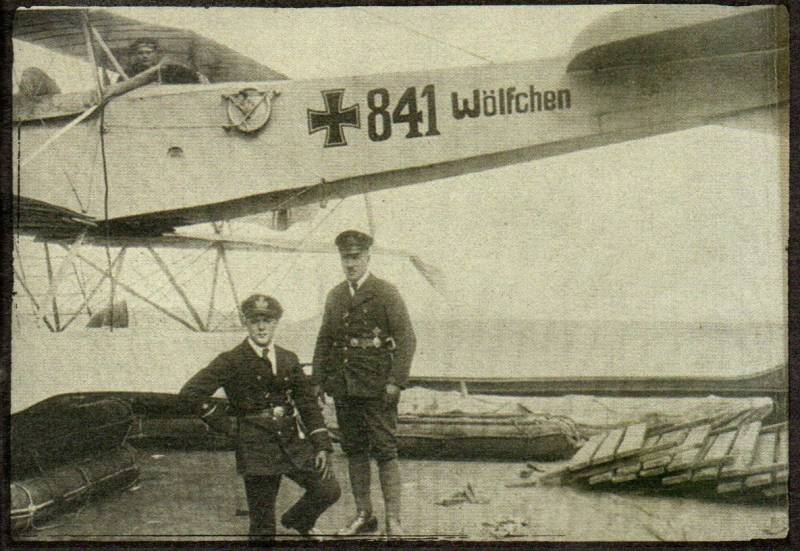
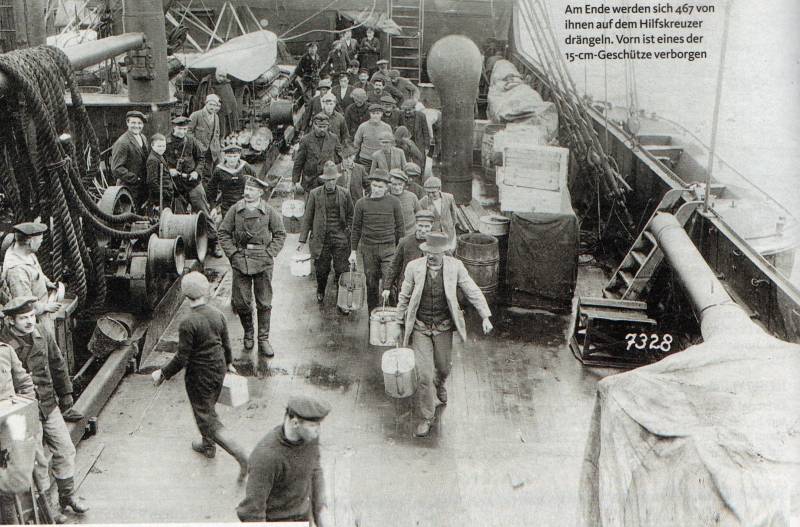
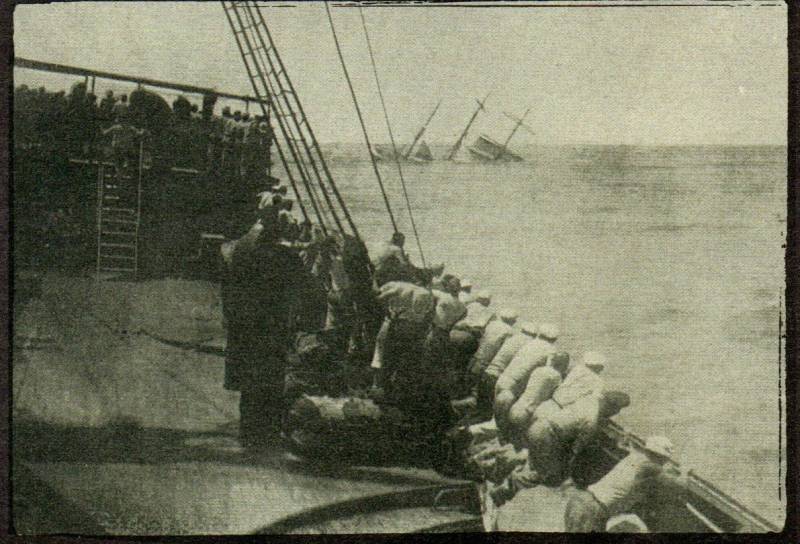
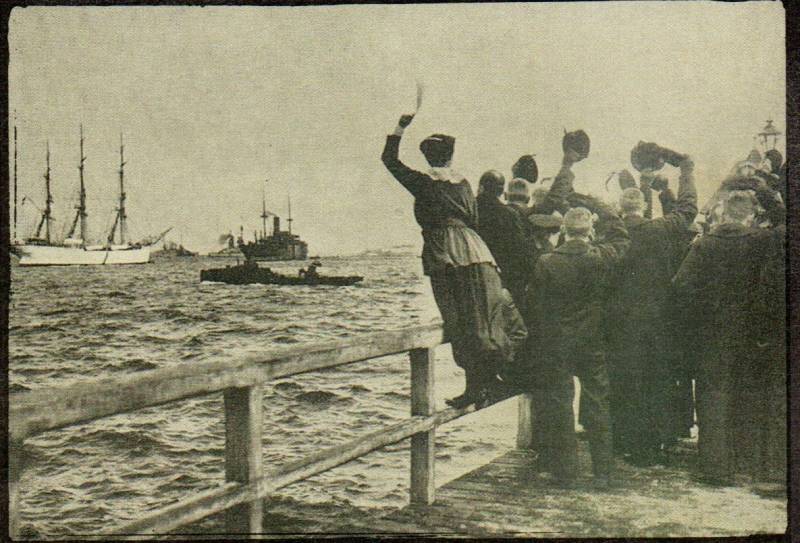
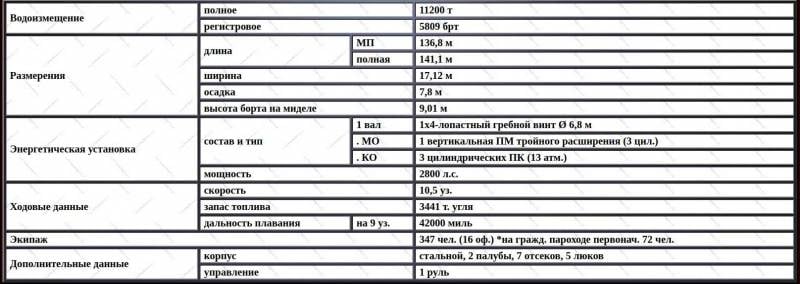

Information